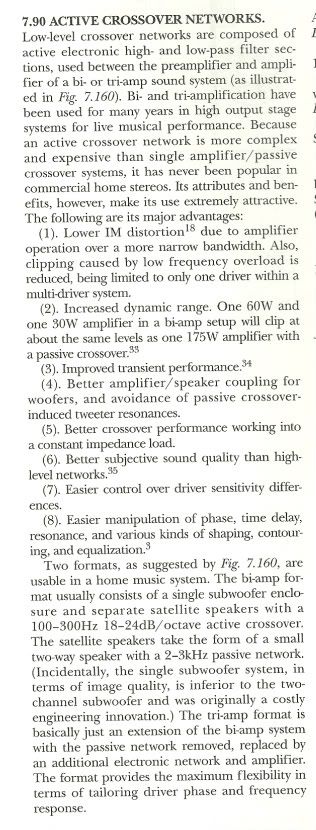Ok, I did this little experiment quite a while ago with a set of Ti elites for my own purposes. I never documented the findings, so this time around I am. I no longer have the Ti elite's, but I do have a fairly descent xover here from PPI that will do the trick. The results of the test are similar to the findings I had back with the Ti elite's which only further reinforces that passive xovers do indeed rob power from the amplifier.
Please know that I did not sabotage the findings in anyway!!! I'm not that kind of guy!
Here's the rundown:
I wanted to make this as simple as possible in order for anyone with an amp, a load (speaker or power resistor)& passive xover of course, a signal generator (cd player for instance), and a mulitmeter (or even just an ac volt meter) could perform this test for themselves.
For my particular test, I used a Kicker ZR240 amp to first drive a 4 ohm 100w resistor and then drive the same resistor with the xover inline to determine if the voltage would stay the same, or if the xover created a voltage drop. Also, the power applied was never higher than roughly 50'ish watts. This is well within the limits of the xover and should negate any dispute that the xover was working into saturation.
Note: I decided to use a power resistor instead of an actual speaker simply because it makes the measurements easier to read. The reactive load of a driver will make the measurements fluctuate at least to some extent and only makes it more difficult for "consistant" measurements. Please know I only did this for simplicity and the results are just as valid for resistors as they are for speakers 
The resistor was connected to the "low" output of the passive xover. For this test I only used the "low" output from the xover. Again, to keep this as simple as possible. This particular xover is a relatively simple 12db/octave design using quality parts. The xover point is roughly 3khz and there are no other notch filters or inline resistors to impede the testing. Again.. simple. The amplifier was fed with a 100hz sinewave from the cd player (using a disc with test tones of course) that I use for bench testing product. I chose this particular freq for a couple of reasons. First, 100hz is
FAR from the xover point. Meaning, in an ideal world, there should not be any voltage drop at the load due to the xover. Second, 100hz is definitely within the midbass region where "most" of us want every last bit of power we can get our hands on.
I decided to do three different power levels and determine just how much voltage drop (if any) was caused from the xover. The measurements are very easy to accomplish:
First: Apply the resistor directly to the output of the amplifer. Turn on the amp, feed it the 100hz signal, and record the AC voltage either at the output terminals, or the connecting points for the resistor istelf. Polarity is not an issue here sinse we are measuring AC. For my measurements, I gained the amp for nice even figures...5v, 10v, & 15v, but this is not necessary. THIS AC measurement is your reference point!!! The next step is to disconnect the resistor and now apply it to the "low" output terminal of the xover. Now, of course, you connect the xover "input" terminal to the amp just as if you were doing an install. Here's where you will find your results: Your next measurement is going to be the AC voltage "after" the xover. In other words, measure AC @ the output terminals of the xover. If your AC voltage is Identical to your prior "Reference" measurement, then the xover is NOT waisting power. However, if the the AC voltage is "any" lower than your prior Reference voltage, then the xover IS disipating power.
Here are my results:
First @ 5 volt AC..... the amp is driving the resistor directly
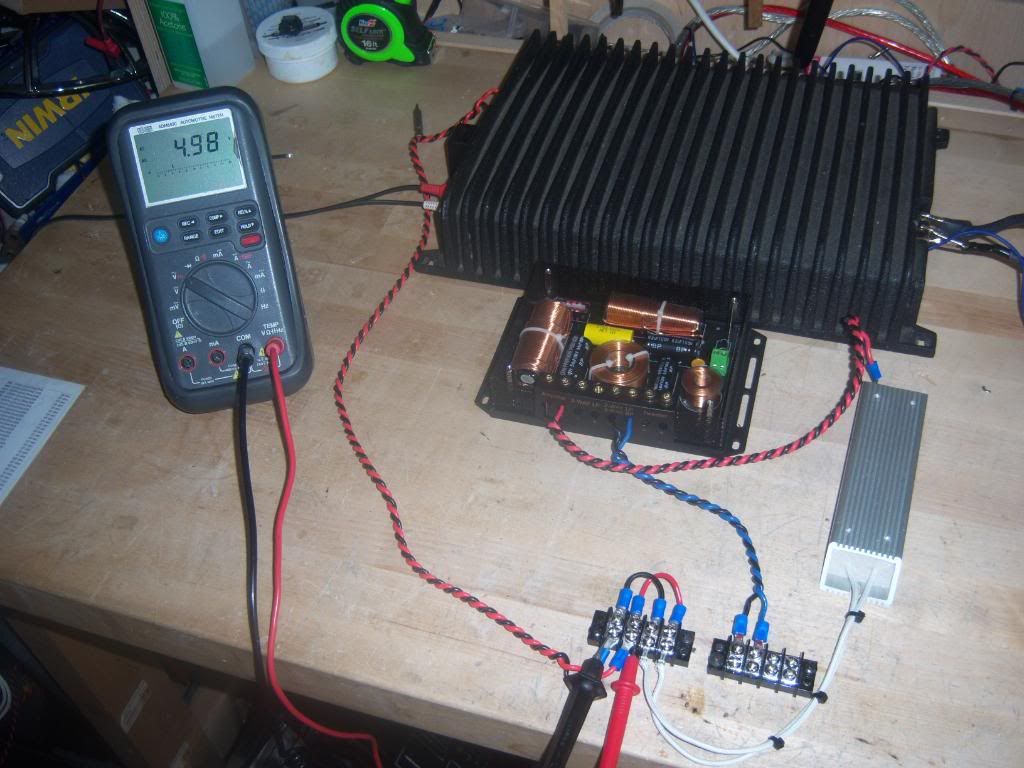
Now still at 5 volt AC output..... but the amp is now driving the resistor with the xover inline and the measurement is still taken @ the resistor
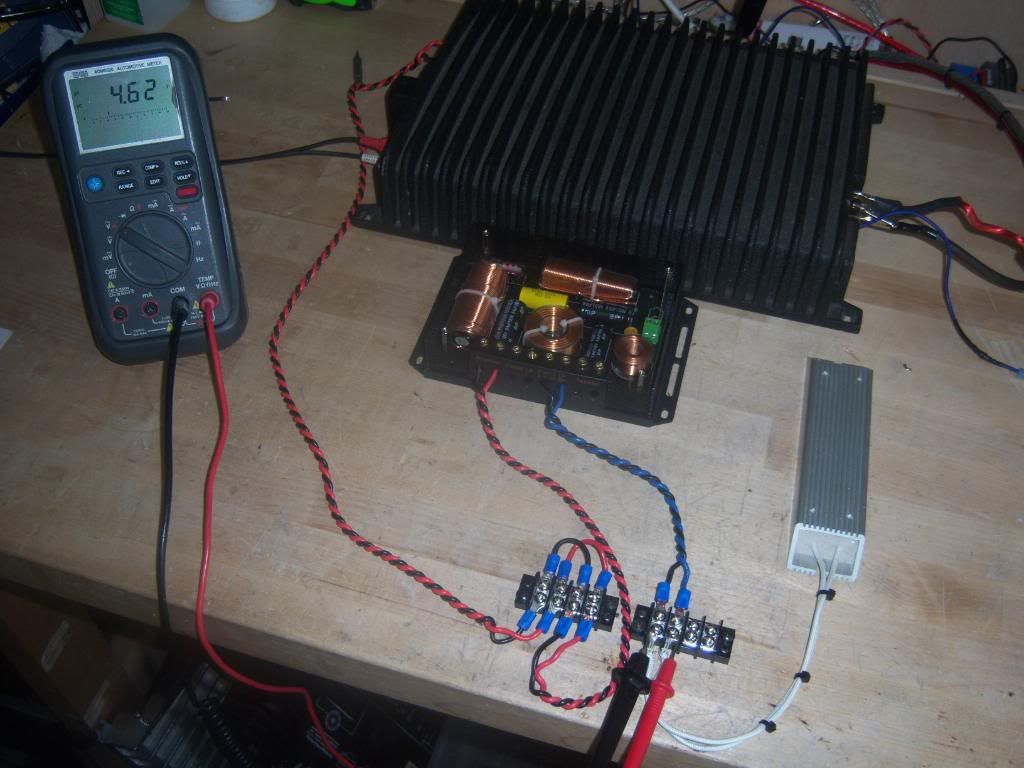
Next @ 10 volt AC.... the amp is driving the resistor directly

Now still at 10 volt AC output..... but the amp is now driving the resistor with the xover inline and the measurement is still taken @ the resistor
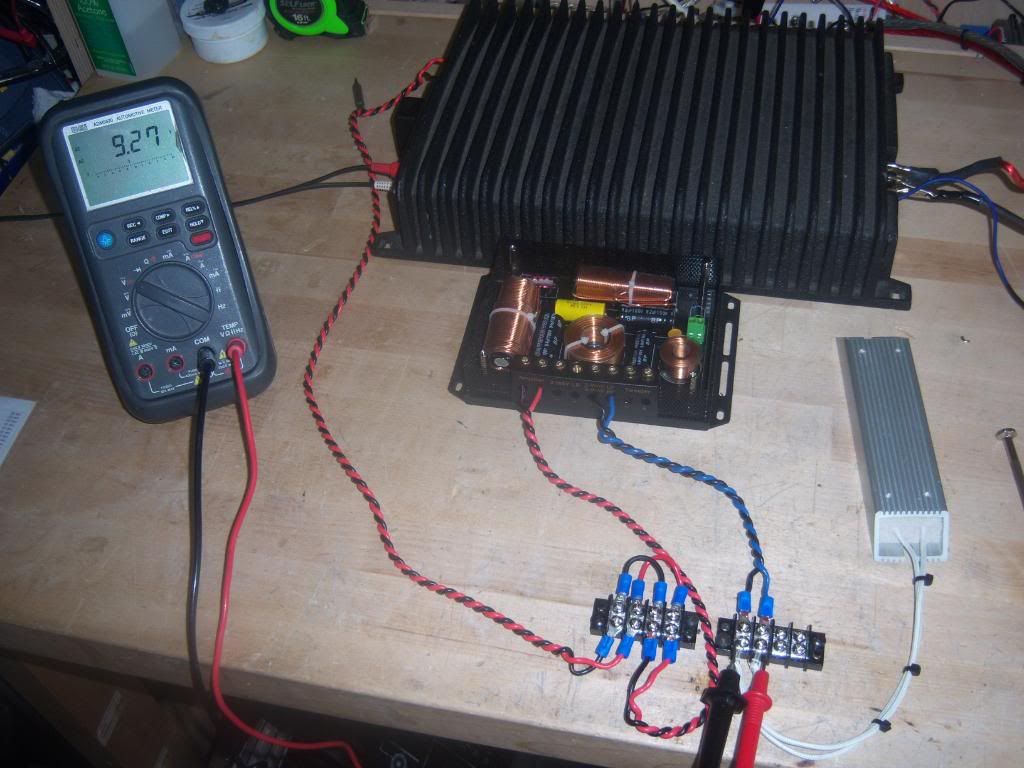
Next @ 15 volt AC.... the amp is driving the resistor directly
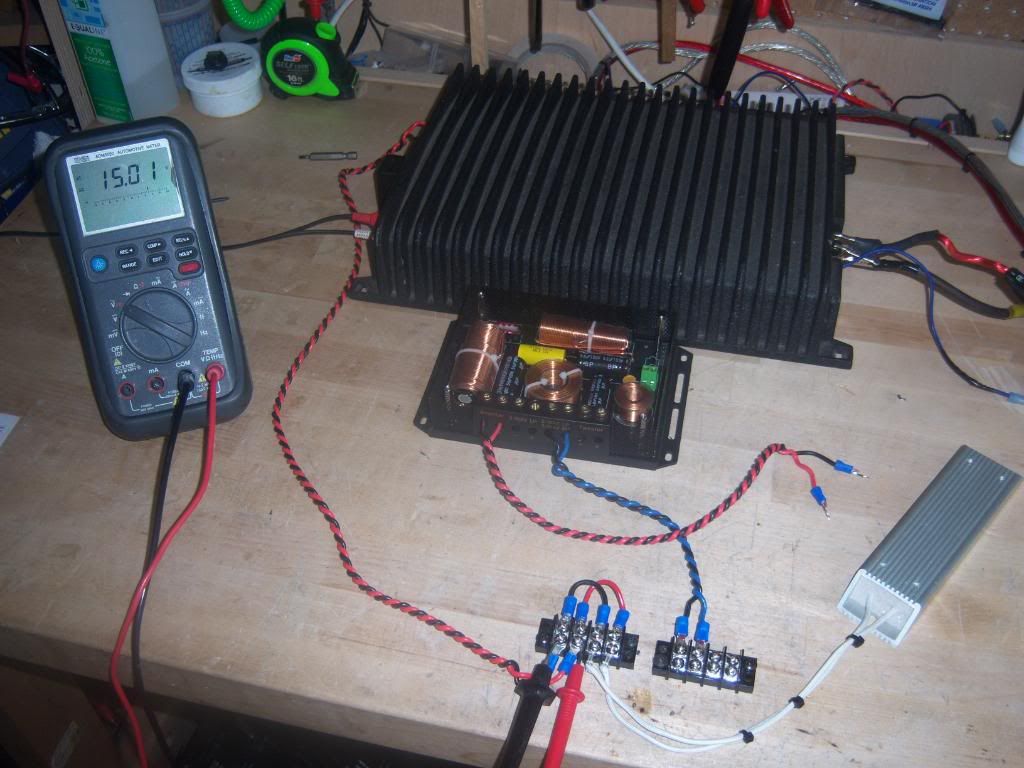
Now still at 15 volt AC output..... but the amp is now driving the resistor with the xover inline and the measurement is still taken @ the resistor
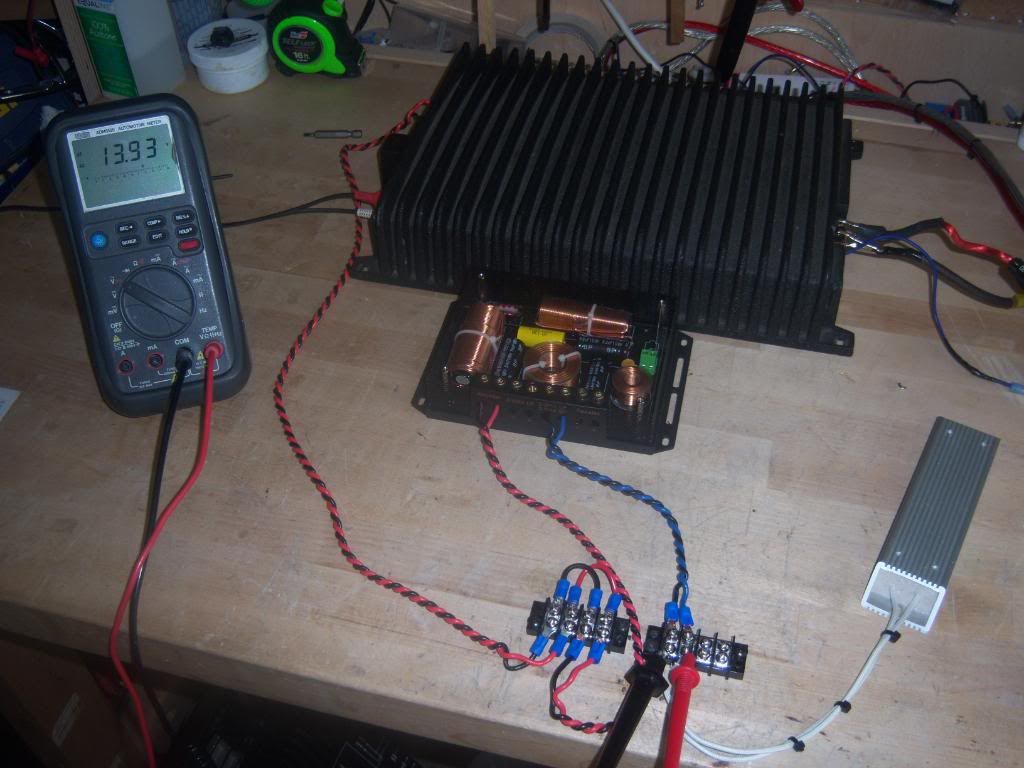
From these results, it's pretty easy to see that the xover is causing a voltage drop.
Here's a little math to go along with the findings:
First test: 4.98Vac with a 4 ohm load equates to 6.2 watts (Voltage squared/Resistance) and with the xover inline, we get a reading of 4.62Vac or 5.34 watts. This is a total voltage drop of .38Vac or .86 watts. A loss of .86 watts equates to approximately a 7.21% loss of power
2nd test: 10Vac @ 4ohm = 25w. Xover inline= 9.27Vac or 21.48w for a loss of 3.52w.....7.1% loss of power
3rd test: 15Vac @ 4ohm= 56.25w. Xover inline= 13.93Vac or 48.51w for a loss of 7.74w.....7.27% loss of power
Now granted this is just for this particular xover, but like I said before, these findings are very similar to the "high-end" Ti elite crossover I had tested before. These results are also right in tune with what smgreeen had quoted from Vance Dickason that passive crossovers disipate approximately 5% of the power applied to them.
Also keep in mind that this is just a 2nd order (12db/octave) design. A 3rd or 4th order design will present even more of a voltage drop.

Another note: These findings were only with 100hz applied. As the frequency goes higher (for the "low" output) the voltage drops become even greater!!!

I understand that a 5,6,7% loss of power may not sound like much, and that's fine. Nevertheless, the point is these crossovers DO INDEED rob power, however large or small it may be.
If anyone would like to try this test on his own, I'ld be happy to help with any questions.







